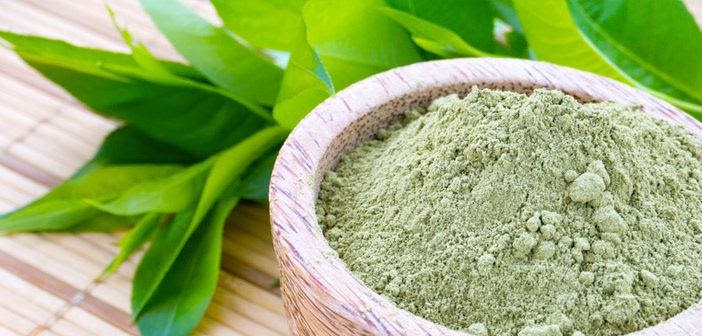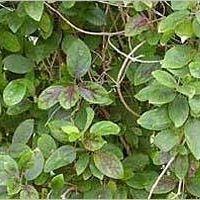Cette plante est aussi appelée miracle fruit grâce aux différents bienfaits qu’elles rapportent. Pour le plus courant, le Gymnema Sylvestris est utilisé pour régler les problèmes diabétiques, car ses vertus sont surtout orientées sans la limitation des envies de sucres. Pourtant, l’arbuste présente encore de nombreuses efficacités pour le bien-être de l’organisme.
Le Gymnema Sylvestris: pour la régulation de la glycémie
Ce fut déjà depuis des millénaires que la médecine ayurvédique utilise le Gymnema Sylvestris. La vertu contre le sucre a été connue, il y a 2 500 ans par la médecine traditionnelle indienne. On s’en servait pour guérir le diabète, autrefois dénommé urine de miel. Outre de diminuer les envies de sucre, il peut également diminuer le taux de sucre dans le sang. On retrouve cette plante dans plusieurs endroits de la terre. On rencontre également un grand nombre de variétés.
Focus sur le Gymnema Sylvestris
Le Gymnema Sylvestris est un arbuste de la famille des Apocynaceae. On note sa présence dans trois continents. En Afrique, on en rencontre dans les régions Ouest, le Sud et le Sud Est. En Asie, on en aperçoit particulièrement dans le Proche-Orient, dans la partie Sud – de l’Inde à la Malaise – et dans l’Extrême Orient. On peut également en retrouver en Océanie, en Australie. Cette omniprésence avait facilité la vulgarisation des techniques de guérison à partir de cette plante.
Note sur l’arbuste
Le Gymnema Sylvestris est un buisson qui peut atteindre deux à trois mètres de haut. L’arbuste rampe et se présente sous la forme de liane.
Il possède des feuilles ovales à disposition opposée. Celles-ci sont de forme arrondie, voire un peu ovale, de 2,5 centimètres d’envergure.
La plante présente des fleurs jaunâtres et parfumées, au nombre d’une dizaine à l’extrémité de la zone d’inflorescence. Le Gymnema Sylvestris possède également des fruits en follicule de 10 cm d’envergure à plusieurs graines.
La tige est de couleur grise. Elle comporte une écorce avec des poils courts qui deviennent lissent au fur et mesure.
On note actuellement cinq grandes variétés de Gymnema Sylvestris dans le monde. On cite les différentes variétés dont la ceylanica Hook, la chinense Benth, la decaisneana Thwaites, la decaiseanum Thwaites et la Sylvestre.
Comment utiliser le Gymnema Sylvestris ?
En usage traditionnel, on mâche les feuilles, les fleurs, les fruits et les racines du Gymnema Sylvestris. Le goût est ensuite mélangé à de la salive. Certaines habitudes consistent à cracher les débris, d’autres permettent de les avaler.
Il existe également des usages par la préparation en marmelade ou en cuisine. On fait cuire une partie de l’arbuste, comme la feuille ou la tige, et on ajoute quelques ingrédients. La potion est utilisée comme de la tisane, en infusion, en inhalation et en application sur une partie du corps.
Le Gymnema est généralement consommé à titre de complément alimentaire. Les feuilles peuvent constituer un ingrédient pour la soupe. En Afrique, on cuit les fruits comme les légumes. Le goût n’est pas loin de celui de la pomme de terre.
Actuellement, des procédés commerciaux existent. On rencontre des procédés à base de poudre ou d’huile essentielle. On peut les acheter sur Internet ou chez certains distributeurs de remèdes naturels.

De la poudre de Gemnyma Sylvestris
Les différentes vertus du Gymnema Sylvestris
Ce n’est pas par pur hasard que les Indiens ont surnommé cette plante de fruit miracle. En effet, ces bienfaits sont multiples et au cours de l’histoire, on s’en servait pour guérir certaines maladies. Le Gymnema Sylvestris est actuellement utilisé dans les recherches scientifiques pour des aboutissements médicaux et pharmaceutiques. Plusieurs produits sont actuellement présents sur le marché des médicaments et des remèdes naturels.
Les composants naturels et leurs effets
Les principaux composants du Gymnema Sylvestris sont des éléments bios actifs dont des acides spécifiques. Ces substances ont pour effet de modifier le goût et de supprimer l’envie de sucre. L’arbuste présente également une teneur en acide aminé.
En effet principal, le Gymnema Syslvestris, par toutes ses formes permet de diminuer l’envie de sucre chez un individu. Cela entraîne la diminution du taux de glucose dans le sang. Il s’agit donc d’une solution efficace pour accompagner le soin contre le diabète. Par conséquent, cela pourrait combattre l’obésité et agir pour la perte de poids. La plante a pour autant des effets en empêchant les infections de se répandre.
Outre de cela, en Afrique, on utilise le Gymnema Sylvestris pour traiter l’épilepsie, prévenir contre le cancer et la goutte. Dans les forêts africaines, on mastique puis applique les feuilles sur la peau après une piqûre d’insecte ou une morsure de serpent.
Les préparations en cuisines sont utilisées pour soigner les problèmes gastronomiques, l’hémorroïde et les fièvres.

Feuille de Gemnyma Sylvestris
Le Gymnema Sylvestris : y a-t-il des précautions à prendre ?
Comme il s’agit d’un complément alimentaire utilisé dans le cadre du soin, étant dit le diabète, une assistance médicale est fermement recommandée. Cela permettrait de jauger les doses à entreprendre.
Il faut, pour autant, faire attention dans le cas de la femme enceinte. L’utilisation de Gymnema Sylvestris pourrait avoir des effets néfastes.
Autrement, dans les cas les plus fréquents, la consommation ou l’utilisation du Gymnema Sylvestris ne présente pas assez d’effet indésirable. Jusque-là, les recherches n’ont entrepris aucune contre-indication à l’égard de cet arbuste.
Toutefois, les recherches n’ont pas encore entièrement abouti sur la totalité des vertus et des effets du Gymnema Sylvestris. A cet effet, il convient de faire attention sur l’utilisation, car on ne connaît pas encore ses méfaits.
Sources :
https://www.passeportsante.net/fr/Solutions/PlantesSupplements/Fiche.aspx?doc=gymnema_ps
https://www.naturalforme.fr/lemag/gymnema-sylvestris/
https://www.arkopharma.com/fr-FR/reguler-sa-glycemie-grace-au-gymnema-sylvestre



